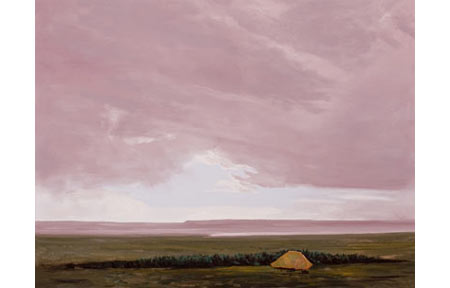
To stand before a broad vista of land — be it mountains or water, desert or wood — always seems to evoke paradoxical sensations of crucial spiritual clarity and earthly insignificance. Such is the case with Michael Brophy’s current exhibition, “South of Twenty,” in which the Southeastern Oregon landscape becomes a trope for these two seemingly incompatible phenomena. Brophy’s large-scale canvases, each bearing the title of “Still” and a corresponding number, invites reflection in both the visual and titular realms. As the sky dominates three-quarters of his canvas, compressing barren landscapes which only occasionally bear ephemeral signs of human life (a tent, a shadow, a campfire), the idea of “stillness” inspires diverging meanings: are these landscapes frozen snapshots, obtainable tracts of Western land that the American imagination has otherwise romanticized as untamed? Or are they fractions of a greater continuum, a still-ness, landscapes that will endure in Brophy’s flat, glossy bands of color, through day and night, through human presence and human vacancy? The work is pure drama; a sense of isolation, impending doom, but also a resonance of awe and wonder in each masterful stroke.
